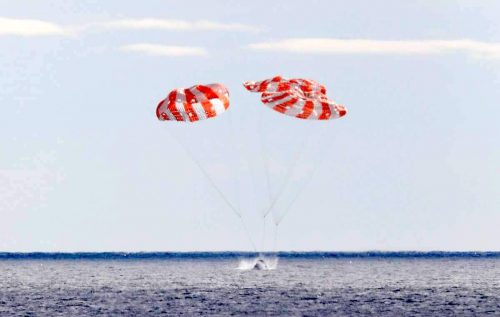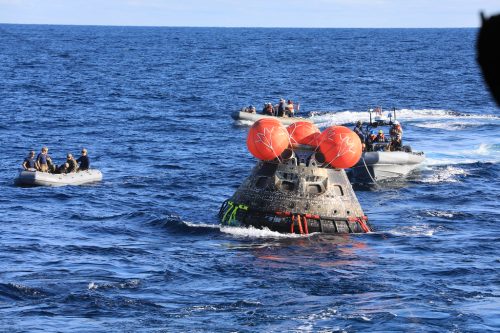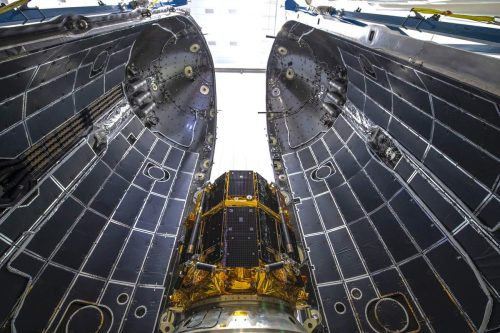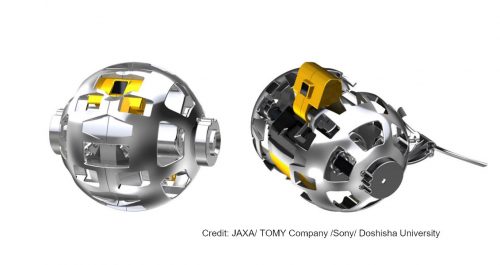NASA’s Orion spacecraft splashed down safely on Sunday, successfully completing the space agency’s Artemis I mission around the moon. In other moon news, a private Japanese company launched a lunar lander that will deliver a rover and a robot to the moon.
Artemis I Spacecraft Orion Splashes Down
The Orion capsule is a spacecraft that will carry humans in the future. It’s part of NASA’s Artemis project, which is designed to send humans to the moon again.
NASA used the 25-day Artemis I mission to test its systems for safety. When Orion splashed down safely in the Pacific Ocean, it passed the final, and perhaps most difficult, test for the Artemis I mission.

(Source: NASA/Kim Shiflett [Public domain], via Wikimedia Commons.)
As it fell through Earth’s atmosphere, Orion was traveling at speeds of about 24,500 mph (39,400 kph). The capsule was later collected by the US Navy. It appears to have held up well under temperatures as high as 5,000º Fahrenheit (2,760º Celsius).
There were no astronauts on the flight, but NASA sent some human-sized models. The models had built-in sensors to help NASA see how the flight might affect humans. NASA can now check the information collected by those sensors.
The space agency hopes to learn how the models were affected by radiation in space and by the intense shaking as Orion fell to Earth. That information will allow NASA to make changes to its capsule to protect real human astronauts.

(Source: NASA Johnson, via Flickr.com.)
The US, with its Apollo missions, is the only country that has ever sent men to the moon. NASA aims for a future Artemis crew to include the first woman and the first person of color on the moon.
Sunday’s splashdown came exactly 50 years after the final Apollo mission touched down on the lunar surface in 1972. The entire Artemis I mission went very smoothly, which is a good sign for future Artemis missions.
The next stage of the Artemis project could come as early as 2024, when NASA plans to send two astronauts to orbit the moon on the Artemis II flight. Actually landing astronauts on the moon will be the goal of the Artemis III flight. That’s planned for 2025, but it’s likely to be delayed.
Private Japanese Company Launches Moon Lander

(Source: ispace.)
On Sunday, a SpaceX rocket blasted off, carrying a lunar lander created by a private Japanese company called ispace. If its M1 lander makes it to the moon safely, ispace could become the first private company to land a spacecraft on the moon.
The M1 lander is part of ispace’s Hakuto-R mission, which is carrying a four-wheeled rover called Rashid that was developed by the United Arab Emirates. It’s also carrying a two-wheeled robot about the size of a baseball for the Japanese space agency, JAXA.

(Source: JAXA.)
The mission is taking a slow path to the moon to save fuel and allow the lander to carry more items. The lander is expected to arrive at the moon in April.
Other private companies are also planning to launch lunar landers early next year. Since these companies plan to travel to the moon more directly, they could arrive first.
